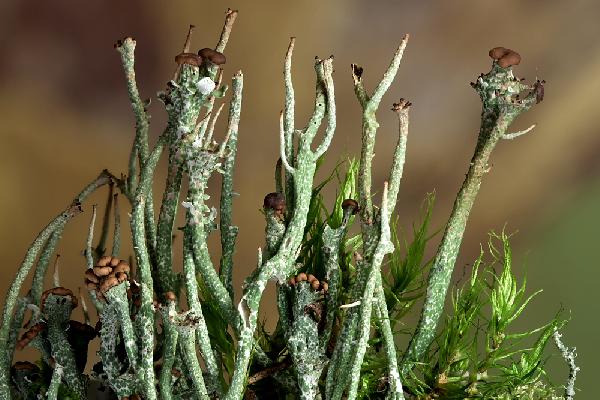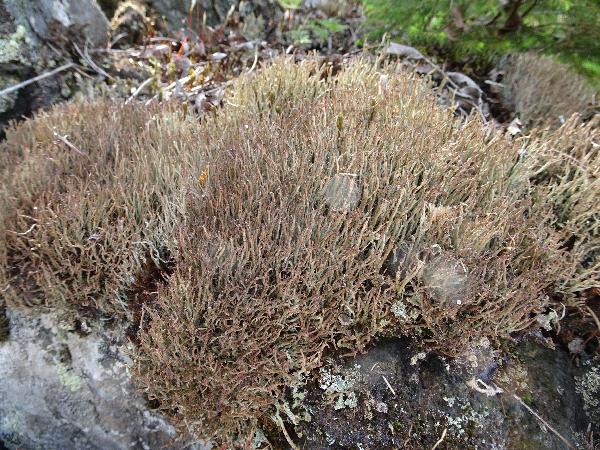Cladonia gracilis (L.) Willd. subsp. gracilis
Fl. Berol. Prodr.: 363, 1787. Basionym: Lichen gracilis L. - Sp. Pl., 2: 1152, 1753.
Synonyms: Cladonia chordalis (Flörke) Nyl.; Cladonia gracilis var. chordalis (Flörke) Schaer.
Distribution: N - Frl (Tretiach & Hafellner 2000), Ven (Nimis 1994, Nascimbene & Caniglia 1997, 2003c, Caniglia & al. 1999, Lazzarin 2000b), TAA (Caniglia & al. 2002, Nascimbene & al. 2008c, 2022, Brackel 2013), Lomb (Rivellini 1994, Rivellini & Valcuvia 1996, Gheza & al. 2022), Piem (Isocrono & al. 2004, Isocrono & Piervittori 2008), VA (Borlandelli & al. 1996, Piervittori & Isocrono 1997, 1999, Revel & al. 2001), Emil (Ferrari & al. 1994, Dalle Vedove & al. 2002, Fariselli & al. 2020), Lig (Brunialti & al. 1999). C - Tosc (Benesperi & al. 2007), Marc, Abr. S - Si.
Description: Primary thallus squamulose, often persistent only at the base of podetia or ephemeral, the squamules ascending, small to middle-sized 2-5 mm long, 0.8-5 mm wide, irregularly crenate or lobed, glaucescent to olive-green above, white beneath. Podetia slender and elongate, hollow inside, greenish glaucescent in shade-forms to brownish grey or dark brown, non- or scarcely squamulose, 4-8(-12) cm tall, 0.5-1.5 mm thick (fertile podetia to 2 mm thick), unbranched or sparingly branched, pointed or with small, rapidly flaring, closed, toothed cups, smooth, corticate-areolate, the cortex continuous or disrupted into flat areoles separated by white lines. Apothecia rare, brown, convex, terminal or on the margins of cups. Asci 8-spored, clavate, thickened at apex, with a K/I+ blue tholus and a K/I+ strongly blue outer gelatinous sheath, Cladonia-type. Ascospores 1-celled, hyaline, ellipsoid. Pycnidia dark, semi-immersed, on the margins of the cups or at the tip of cupless podetia, with a colourless jelly. Conidia hyaline, curved. Photobiont chlorococcoid. Spot tests: K- or K+ yellowish slowly turning brown, C-, KC-, P+ red, UV-. Chemistry: substances of the fumarprotocetraric acid complex. Note: a circumpolar, cool-temperate to southern arctic lichen found on acid soil, more rarely on decaying wood in upland areas. According to Ahti (in litt.) its presence in Italy is dubious, and most records from the Alps could refer to C. macroceras. A revision of Italian material is much needed.
Growth form: Fruticose
Substrata: soil, terricolous mosses, and plant debris
Photobiont: green algae other than Trentepohlia
Reproductive strategy: mainly sexual
Commonnes-rarity: (info)
Alpine belt: rare
Subalpine belt: rare
Oromediterranean belt: extremely rare
Montane belt: very rare
Submediterranean belt: absent
Padanian area: absent
Humid submediterranean belt: absent
Humid mediterranean belt: absent
Dry mediterranean belt: absent
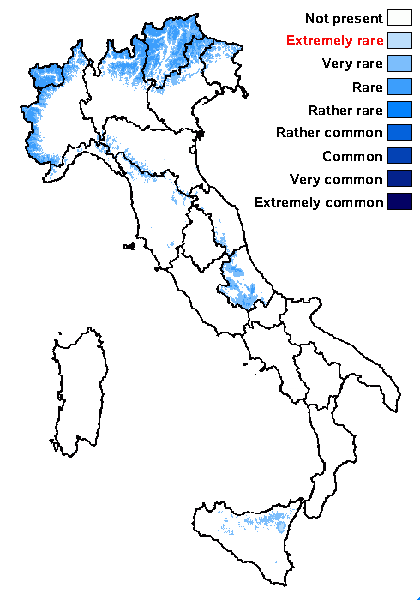
Predictive model
Herbarium samples
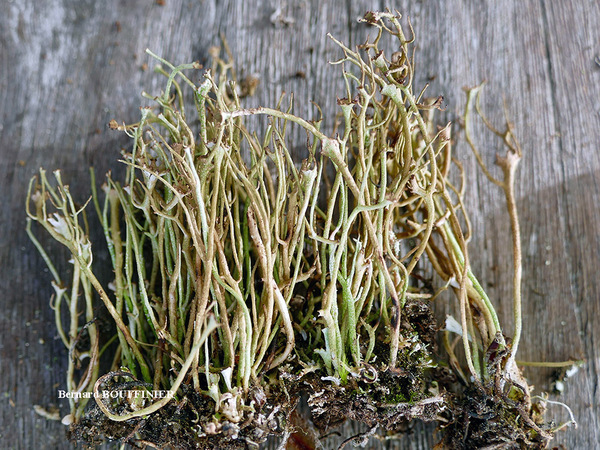
Bernard Bouffinier - Source: http://www.lichensmaritimes.org/index.php?task=fiche&lichen=306&lang=en
France, Menez, Kador
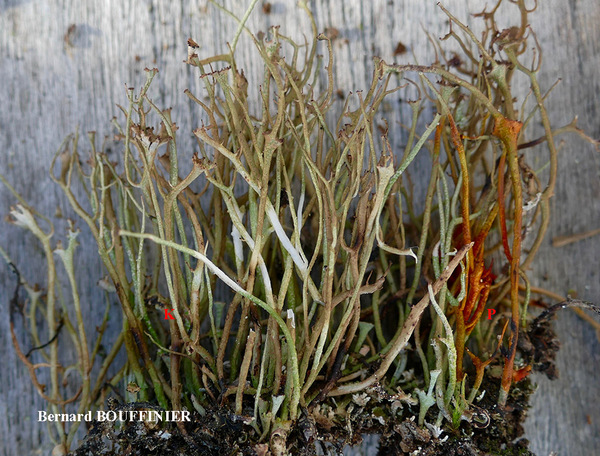
Bernard Bouffinier - Source: http://www.lichensmaritimes.org/index.php?task=fiche&lichen=306&lang=en
France, Menez, Kador
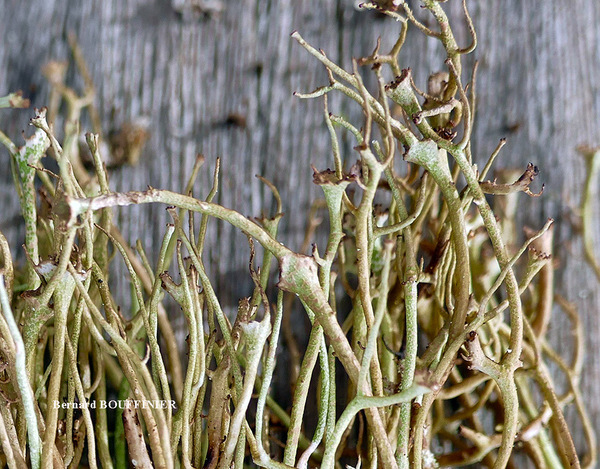
Bernard Bouffinier - Source: http://www.lichensmaritimes.org/index.php?task=fiche&lichen=306&lang=en
France, Menez, Kador
Growth form: Fruticose
Substrata: soil, terricolous mosses, and plant debris
Photobiont: green algae other than Trentepohlia
Reproductive strategy: mainly sexual
Commonnes-rarity: (info)
Alpine belt: rare
Subalpine belt: rare
Oromediterranean belt: extremely rare
Montane belt: very rare
Submediterranean belt: absent
Padanian area: absent
Humid submediterranean belt: absent
Humid mediterranean belt: absent
Dry mediterranean belt: absent

Predictive model
| Herbarium samples |

Bernard Bouffinier - Source: http://www.lichensmaritimes.org/index.php?task=fiche&lichen=306&lang=en
France, Menez, Kador

Bernard Bouffinier - Source: http://www.lichensmaritimes.org/index.php?task=fiche&lichen=306&lang=en
France, Menez, Kador

 DOLICHENS
DOLICHENS
